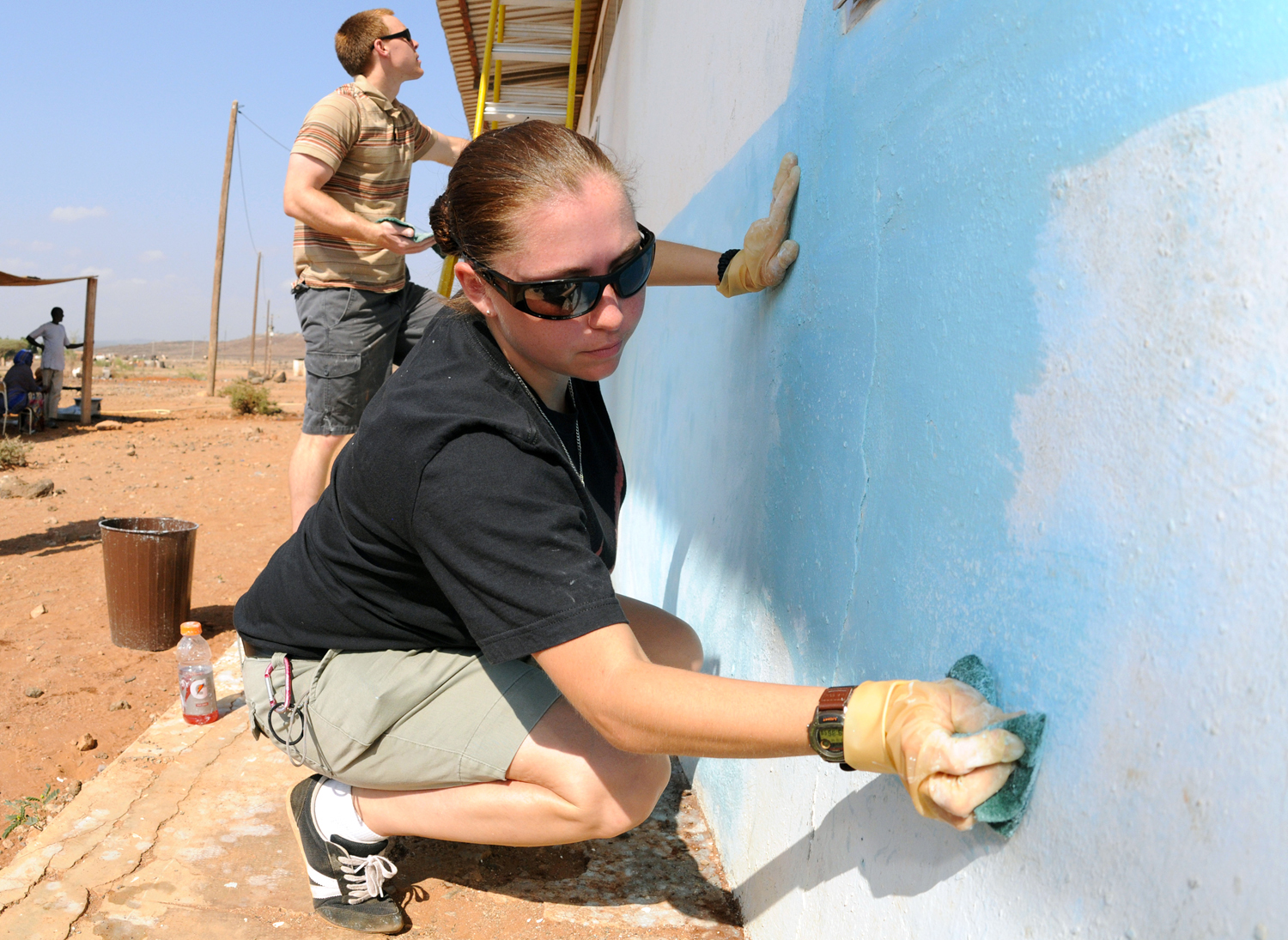If he had a magic wand, Trey Lyon says he would likely transform the way churches conceive, fund and experience mission and spiritual formation.
Basically, he would combine them.
“I would love to see churches with ministers of mission and spiritual formation,” says Lyon. He and his wife, Jennifer, serve at Park Avenue Baptist Church in Atlanta as field personnel with the Cooperative Baptist Fellowship.
“I’m vision-casting here, but we don’t have to differentiate between mission and spiritual formation because they are one and the same thing.”
Lyon and Brandon Pendry, ministers of youth and mission at First Baptist Church in Athens, Ga., took that message to Greensboro, N.C., last month, where they led a workshop on the topic during the CBF’s General Assembly.
They presented a case that if mission was — like Sunday school, worship and weekend retreats — viewed and led as spiritually formative, it would more likely result in long-term relationships between congregations and missionaries and other community partners. Participants also would more often have transformative, faith-nurturing experiences.
Lyon says a lot of the change can come not only from shifts in budget categories and committee names, but also from shifts in perspective on how mission and formation are defined.
“Missions involve going outside of your native context – anytime you encounter another culture,” he says. That can be across the globe or across the street.
Spiritual formation involves activities that nurture and grow Christians in their relationship with Jesus.
Churches and youth group teams routinely visit the Lyons’ literacy and church ministries in Atlanta. Pastors commonly remark that they hope such trips will “light a fire” under their members and youth.
“They want people to go on mission trips for spiritual formation,” Lyon says.

Traditional mission work, including painting churches and other structures, can have just as much of a spiritual impact on participants as attending weekend retreats in monasteries, two CBF ministers say. (Photo/Creative Commons)
But they usually do not word it in those terms, he adds.
Likewise, church members who attend contemplative retreats at monasteries or retreat centers aren’t thinking in mission terms during those events.
“But both groups are pulling themselves out of their own contexts” to grow spiritually, Lyon says.
It’s all the more reason why churches should consider combining the two.
“Why are we splitting these? Because they are one and the same.”
Transcending ‘the hands and feet’
A both-and approach to mission and spiritual formation can result not only in a more efficient use of resources but also in avoiding a common mission pitfall — church tourism or “voluntourism,” Lyon says.
“We want to stay away from mission guides, or tour guides for Jesus where your church is considered only as good as the number of teams it’s sending and where they are scattered around the world.”
“We can do a much better job of treating these trips and local mission partnerships as integral to our faith and not just as ‘hands and feet.’ That implies that you are not ‘hands and feet’ when you are worshiping.”
There are other benefits, including Christians and churches living more fully into God’s will for their lives, Pendry says.
The fusion of the two can generate deeper and longer-lasting relationships between congregations and field personnel, and between partner groups in local contexts, he adds.
The approach is similar to the CBF’s PilgriMission, a program encouraging church members to rethink their attitudes toward mission.
The goal is to avoid trivializing those being served just so members of a mission trip can feel good about themselves, Pendry says.
“There’s less of a focus on doing for the sake of having a project and getting some good before-and-after pictures.”
By partnering with missionaries and outside agencies long-term, Pendry says, mission participants help those in need and grow in faith as they experience what it means to be a transformative presence in the lives of others.
“We can do a much better job of treating these trips and local mission partnerships as integral to our faith and not just as ‘hands and feet.’ That implies that you are not ‘hands and feet’ when you are worshiping.”



